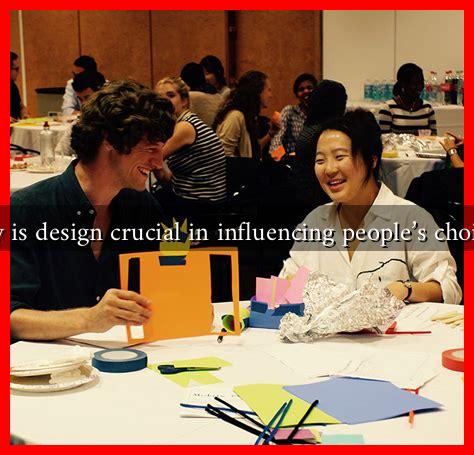-
Table of Contents
Why is Design Crucial in Influencing People’s Choices?
In a world saturated with choices, the role of design has become increasingly significant in shaping consumer behavior. From the packaging of products to the layout of websites, design influences how people perceive and interact with brands. This article explores the various ways in which design impacts decision-making, supported by examples, case studies, and statistics.
The Psychology of Design
Design is not merely about aesthetics; it is deeply rooted in psychology. The way a product or service is designed can evoke emotions, create associations, and ultimately influence choices. Here are some psychological principles that highlight the importance of design:
- Color Psychology: Colors can evoke specific emotions and associations. For instance, red is often associated with urgency and excitement, making it a popular choice for clearance sales.
- Visual Hierarchy: The arrangement of elements on a page can guide a viewer’s attention. A well-structured layout can lead consumers to focus on key information, such as a call-to-action button.
- Consistency: Consistent design across platforms builds trust and familiarity. Brands like Apple and Coca-Cola maintain a cohesive design language that reinforces their identity.
Case Studies: Successful Design in Action
Several companies have successfully leveraged design to influence consumer choices. Here are a few notable examples:
1. Airbnb
Airbnb’s website and app are prime examples of user-centered design. The platform uses high-quality images and intuitive navigation to create an inviting experience. According to a study by Nielsen Norman Group, the design significantly enhances user engagement, leading to higher booking rates.
2. Coca-Cola
Coca-Cola’s branding is a masterclass in design consistency. The iconic red and white color scheme, along with the distinctive logo, creates instant recognition. A study by Forbes found that consistent branding can increase revenue by up to 23%.
The Role of User Experience (UX) Design
User Experience (UX) design focuses on creating products that provide meaningful and relevant experiences to users. A well-designed UX can significantly influence consumer choices by:
- Reducing Friction: A seamless experience minimizes obstacles, making it easier for users to make decisions. For example, Amazon’s one-click purchasing option simplifies the buying process.
- Enhancing Satisfaction: Positive experiences lead to customer loyalty. A study by Forbes found that 86% of buyers are willing to pay more for a great customer experience.
- Encouraging Engagement: Engaging designs keep users interested and encourage them to explore further. Interactive elements, such as quizzes or personalized recommendations, can enhance user engagement.
Statistics That Highlight the Importance of Design
Several statistics underscore the critical role of design in influencing choices:
- According to a study by Forbes, 75% of consumers admit to making judgments on a company’s credibility based on their website design.
- A report from Nielsen Norman Group indicates that a well-designed user interface could increase conversion rates by up to 200%.
- Research by Forbes shows that 94% of first impressions are design-related.
Conclusion
Design is a powerful tool that shapes consumer choices in profound ways. By understanding the psychological principles behind design, leveraging successful case studies, and focusing on user experience, brands can create compelling experiences that influence decisions. As the marketplace continues to evolve, the importance of effective design will only grow, making it essential for businesses to prioritize design in their strategies. In a world where choices abound, design is not just an accessory; it is a necessity.


